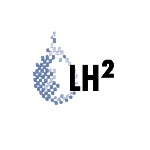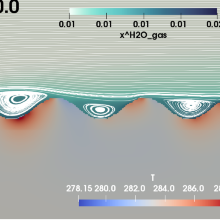Description
The primary objective of this research is to analyze and improve theories of non-isothermal, multi-phase, multi-component flow processes at a soil-atmosphere interface and their influence on the unsaturated zone. The special focus is on the influence of surface roughness and soil heterogeneity to the transfer fluxes. The overarching goal is to develop new, validated physical and mathematical models using comprehensive computational and experimental analyses conducted at different spatial and temporal scales.
This contains 4 main objectives:
1. High fidelity laboratory experiments at the bench and intermediate (2-8 m long) scale will be performed using a one-of-a-kind wind tunnel porous medium test facility, simulating different atmospheric (e.g. wind speed, humidity, temperature), surface (e.g. types of soil roughness) and subsurface (e.g. soil moisture, soil texture and soil structure (aggregated vs. compacted)) conditions to produce unique data sets, which are currently not available.
2. Intermediate scale experiments will be carried out under dynamic outdoor conditions
(i) to test the theoretical descriptions affected by natural heterogeneities (e.g. soil aggregates) and
(ii)diurnal dynamics of driving forces (e.g. wind speed, radiation) and
(iii) to determine how details of heterogeneities can best be included across scales and how they influence exchange fluxes at the field scale.
3. Detailed Darcy-scale numerical simulations (if necessary including the Forchheimer extension), in conjunction with experimental data from laboratory experiments, will be used to analyze the importance of incorporating free flow effects and the related boundary layers for mass, momentum, and energy in conventional modeling efforts (e.g. effect of turbulent free flow conditions on transport through unsaturated soils).
4. The theory of mass, momentum and energy exchange between the soil and the atmosphere will be improved. This includes evaporation, condensation , radiation, and transport of gas components such as volatile organic compounds (VOC) and water stable isotopes in the presence of material interfaces.
As a second step, simplified models with effective parameters, based on an integrated treatment of the flow and transport processes occurring over a wide range of spatial and temporal scales in the soil and at the land surface, will be developed, extended, and tested.
Project leader
Prof. Dr.-Ing.Rainer Helmig
Deputy
Prof. Dr.-Ing. Insa Neuweiler, Hannover
Prof. Dr. Jan Vanderborght, Jülich
Researcher
Thomas Fetzer
Duration
01/2017 - 04/2020
Cooperation partners
Universität Hannover, Forschungszentrum Jülich
Contact




